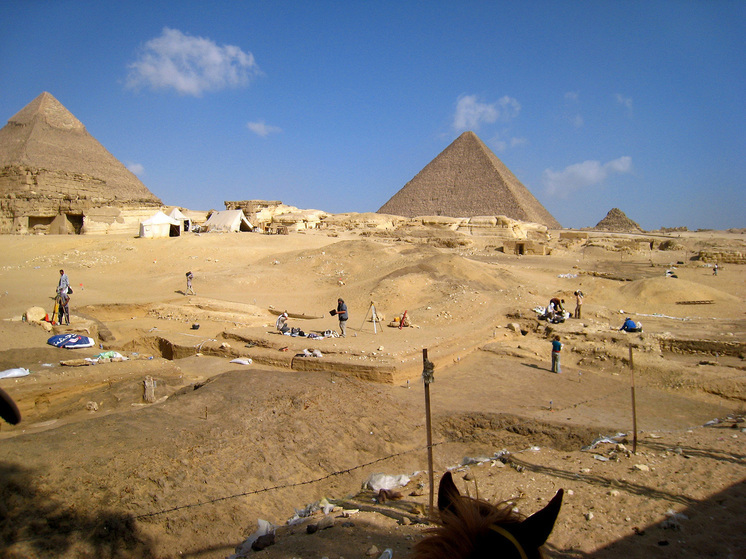'Embalmers failed to close mouth'
An Egyptian mummy with a screaming expression 'may have died in agony', say researchers. Archaeologists believe the wide-open mouth of the woman, who died about 3,500 years ago, may have been caused by a rare form of rigor mortis.

She bears a striking resemblance to Edvard Munch's painting The Scream, but why the ancient Egyptian mummy has such a striking expression has long puzzled researchers, The Guardian reports. Now they say they may have an answer: the woman is thought to have died screaming in agony.
The woman is thought to have been buried around 3,500 years ago and her mummy was discovered in 1935 in a wooden coffin beneath the tomb of Senmut, an important architect during the reign of the female pharaoh Hatshepsut.
She was not alone: archaeologists have also discovered the burial chamber of Senmut's mother, Hatnufer, at a site near Luxor, as well as separate burials for his relatives.
«Although the screaming mummy was not named, she was likely a close member of the family who was buried and shared her final resting place,» said Dr. Sahar Salim, a professor of radiology at Cairo University.
In a paper published in the journal Frontiers in Medicine, Dr Salim and co-author Dr Samia El-Mergany report how they used computed tomography (CT) technology to “virtually dissect” the mummy, and techniques including X-ray crystallography to examine the skin, hair and long black wig.
The scientists say the mummy is well preserved and estimate that the woman was about 1.55 metres tall when she was alive. CT scans showed that she was about 48 years old when she died and had mild arthritis, including in her spine.
However, the researchers found no evidence of an embalming incision and all of the organs were still inside the mummy.
“This was a surprise to me because the classic method of mummification in the New Kingdom (1550-1069 BC) involved removing all organs except the heart,” Dr. Salim said.
While the study notes that such an omission was often attributed to poor mummification of the middle and poor classes, Salim believes this does not appear to be the case with the screaming woman.
Not only was she buried with two scarab rings made of silver and gold, but the researchers found that the embalming materials included juniper resin and frankincense – expensive imported ingredients that may have helped preserve the body.
Tests revealed traces of juniper and henna in the woman's hair, while the wig was made from woven date palm fibres and contained traces of juniper and frankincense, as well as various minerals – perhaps, Saleem suggests, to give the fibres their stiffness and youthful black colour.
The researchers suggest that the finds not only provide insight into mummification, wig making and the ancient trade in embalming materials, but also indicate that the woman's open mouth is unlikely to have been the result of careless embalmers forgetting to close it.
Instead, the team suggests that the woman's expression may have been caused by a rare, immediate form of rigor mortis.
«We speculated that the open mouth could have been caused by a painful death or emotional stress, and that the cadaveric spasm had frozen her face to the way it looked at the moment of death,» says Sahar Salim. «The embalmers were unable to close her mouth and mummified the contracted body before it decomposed or relaxed, keeping her mouth open after death.»
However, the cause of death remains unclear, while the researchers note that other experts have suggested the scream could have been the result of burial procedures or post-mortem changes.
Salima Ikram, a professor emeritus at the American University in Cairo, was not convinced by the team's proposal.
«I really don't think an embalmer would try to preserve that spasm for eternity. So I think the expression is related to something else,» she said, adding that the drying process during mummification takes 40 days. «Of course, they could have changed her features during that time,» Ikram said.
Dr Stuart Hamilton, a Home Office-registered forensic pathologist, said there was debate over the idea of cadaveric spasms, adding that he had never seen a convincing example.
«I accept that it exists, although it is certainly controversial,» he said. But he added that no complex explanation was needed: «I would have thought the mouth had simply opened and stayed open.»
This is not the only mummy to 'scream'. Salim and her colleagues previously studied the body of what is believed to be Prince Pentawere, the son of Pharaoh Ramses III, who was involved in a plot to assassinate his father.
'Pentawere's body was barely embalmed, which may indicate that the embalmers did not bother to keep his mouth shut, perhaps as a punishment, causing him to scream for ages,' says Dr Salim.
The remains of Princess Meritamun, believed to be the sister of King Ahmose, who reigned from around 1550 to 1525 BC, also have the expression.
Salim and her colleagues say their previous work suggests Meritamun died of a sudden and massive heart attack. «The wide-open mouth was probably the result of the natural post-mortem drooping of the jaw, maintained by post-mortem muscle contraction — rigor mortis — which prevented the embalmers from closing her mouth,» explains Dr Salim.


